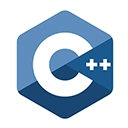Stacks and queues are essential data structures in C++ used for managing data elements in a specific order. In this guide, we'll introduce you to stacks and queues, including explanations and sample code.
1. Stacks
A stack is a linear data structure that follows the Last-In-First-Out (LIFO) principle. This means that the last element added to the stack is the first one to be removed. In C++, you can use the std::stack container to work with stacks:
#include <iostream>
#include <stack>
int main() {
std::stack<int> myStack;
// Push elements onto the stack
myStack.push(1);
myStack.push(2);
myStack.push(3);
// Pop elements from the stack
while (!myStack.empty()) {
std::cout << myStack.top() << " "; // Print the top element
myStack.pop(); // Remove the top element
}
return 0;
}
2. Queues
A queue is another linear data structure, but it follows the First-In-First-Out (FIFO) principle. In C++, you can use the std::queue container to work with queues:
#include <iostream>
#include <queue>
int main() {
std::queue<int> myQueue;
// Enqueue elements into the queue
myQueue.push(1);
myQueue.push(2);
myQueue.push(3);
// Dequeue elements from the queue
while (!myQueue.empty()) {
std::cout << myQueue.front() << " "; // Print the front element
myQueue.pop(); // Remove the front element
}
return 0;
}
3. Implementing Stacks and Queues
You can also implement stacks and queues using arrays or linked lists. For example, here's a simple implementation of a stack using a dynamic array:
#include <iostream>
#include <vector>
class Stack {
public:
Stack() {}
void push(int value) {
elements.push_back(value);
}
void pop() {
if (!empty()) {
elements.pop_back();
}
}
int top() {
if (!empty()) {
return elements.back();
}
return -1; // Handle empty stack
}
bool empty() {
return elements.empty();
}
private:
std::vector<int> elements;
};
int main() {
Stack myStack;
myStack.push(1);
myStack.push(2);
myStack.push(3);
while (!myStack.empty()) {
std::cout << myStack.top() << " ";
myStack.pop();
}
return 0;
}
4. Use Cases
Stacks are often used for tasks like tracking function calls in recursion, managing undo/redo functionality, and evaluating expressions. Queues are used for tasks like managing tasks in a print spooler, scheduling processes, and implementing breadth-first search algorithms.
Conclusion
Stacks and queues are fundamental data structures in C++ that serve various purposes. By understanding their principles and using C++ containers or implementing your own, you can efficiently manage and manipulate data in a stack-like or queue-like manner in your C++ programs.

